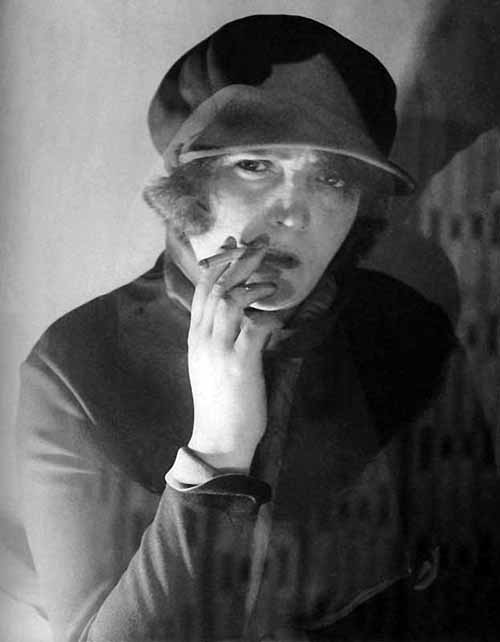Stepanova Varvara Fyodorovna (1894-1958)
Stepanova, Varvara Fedorovna (1894-1958), Russian painter, a master of Russian avant-garde of the first half of the 20th century. P odilas in Kovno (now Kaunas, Lithuania), October 23 (November 5) in 1894 in the family of an official. From 1910 he studied at the Kazan Art School, where in 1914 met A.M.Rodchenko , her future husband and collaborator on art. Not finishing school, went to Moscow, and in 1915-1917 worked as a bookkeeper and typist in a factory, simultaneously engaged in painting in the studio KFYuon . The beginning of its independent path in art coincided with the revolution. She lived in Moscow. In 1917-1919 fond of visual poetry, composing graphic compositions from the "high-brow" strings (manuscripts Rtny Homle, Zigra ap Globolkym). In 1919, the book has provided his own illustrations A.E.Kruchenyh Gly-Gly. Over the years, become one of the most active artists 'community members' sense of avant-garde. Served in the Department of Fine Arts (College for Fine Arts), the People's Commissariat (1919-1922) collaborated with the Institute of Artistic Culture (INKhuK, 1920-1923), taught at the studio of the Academy Of communist education Krupskaya (1920-1925) and in the Higher Art (Higher Art and Technical Studios, 1924-1925). Constantly engaged - as an artist and art director - mass-media design: in the magazines "Kinofot" (1922), "LEF" and "New LEF" (1923-1927), "Soviet Cinema", "modern architecture", "Change" "The book and the revolution", etc. (1926-1932), "The Soviet Woman" (1945-1946). In 1933-1934 served as art editor at Partizdat. In the 1930-1950-ies issued - often in collaboration with Rodchenko - a lot of agitation and political Album (Lenin's Testament women all over the world, Results of the First Five-Year Plan, First Cavalry, Soviet Air Force, State Farm, 25 years of Kazakh SSR, the Moscow Metro, etc.) . Freestyle futuristic "nonsense" is consistently forced out of her creativity strict socialist realist agitprop, superseded by censorship and avtotsenzurno. However, the most fanciful game, anarchist-disaster was an early creative flowering Stepanova, embodied in visual poetry, and in a series of graphic and pictorial compositions Figures (1919-1920) - a series of rhythmic and sharp-like "dancing", and needlework, not designed for mass circulation posters and collages of those years. A little later, an important field of avant-garde experiment, it was the set design, which combines constructivism with the poetics of the grotesque absurdity (sets and costumes for the play Death of Tarelkina AVSuhovo-Kobylina in Meyerhold Theatre, 1922). Stepanova also acted as a radical innovator textile design, performing 150 drawings (for the first textile factory, 1924-1925), where excel invisible light and elegant image of the artist as a radiating geometric patterns in their creative energy. In his best theoretical performances of the 1920s championed the independence of the new art, understanding it as a "miracle" that can not be grasped in uzkoutilitarnom, purely functional terms. In the later period of its editorial activity (mainly for the publishing house "Art") is entirely dominated art. Stepanov died in Moscow on 20 May 1958.
The artworks |
code at our gallery
artist Stepanova Varvara Fyodorovna , Russian artist Stepanova Varvara Fyodorovna , about the artist Stepanova Varvara Fyodorovna , Information about artist Stepanova Varvara Fyodorovna
watch also | ||||||||||||









